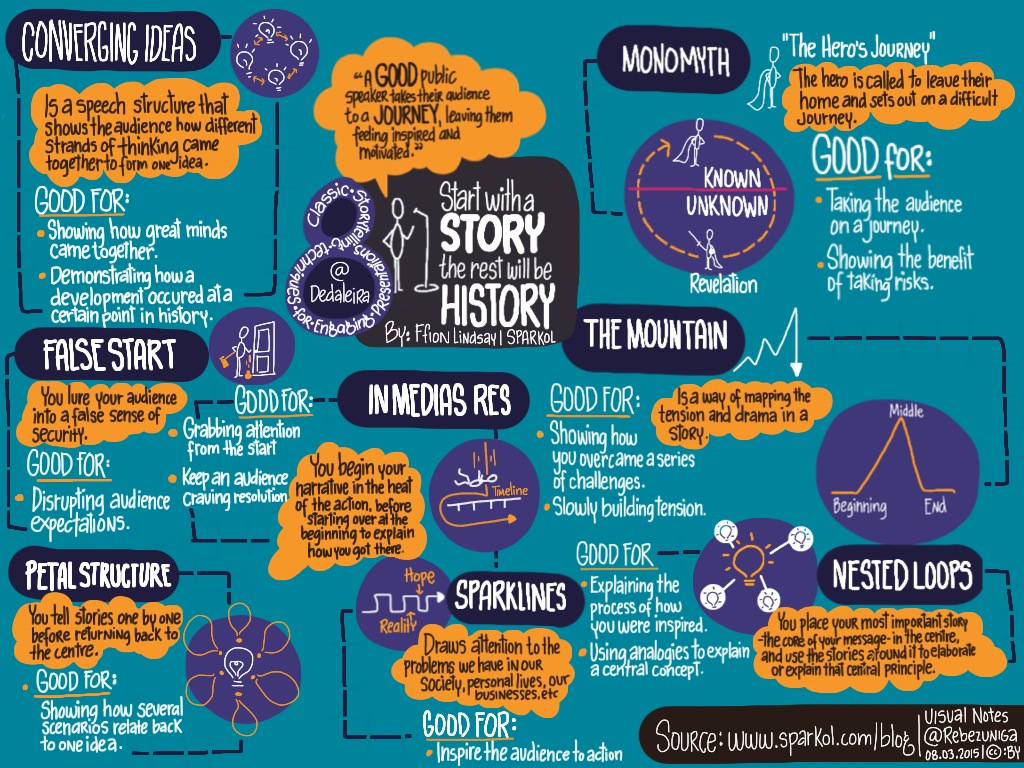Welcome to our blog post on “Mastering the Art of Public Speaking: Expert Tips and Techniques.” In this video, we delve into the world of public speaking, uncovering valuable insights and strategies shared by seasoned professionals. Whether you’re a novice presenter or looking to refine your skills, this captivating discussion will equip you with the tools to conquer any stage with confidence. Join us as we explore the fundamental secrets to captivating an audience, perfecting your delivery, and unlocking the power of your voice. Get ready to become a master storyteller and leave a lasting impression on every listener. So, grab a cup of coffee, sit back, and let’s dive into the art of public speaking!
Table of Contents
- - Techniques for Overcoming Stage Fright and Nervousness
- – Effective Strategies for Captivating Your Audience
- - Key Tips for Improving Vocal Delivery and Body Language
- – Building Confidence: Practical Exercises and Mental Preparation
- Q&A
- To Conclude
– Techniques for Overcoming Stage Fright and Nervousness

Techniques for Overcoming Stage Fright and Nervousness
Are you tired of feeling your heart race and your palms sweat every time you step onto a stage? Overcoming stage fright and nervousness can seem like an impossible task, but with the right techniques, you can conquer your fears and become a confident performer. In this section, we will explore some tried and tested methods that will help you overcome stage fright and nervousness once and for all!
1. Deep Breathing: One of the most effective ways to calm your nerves before going on stage is through deep breathing exercises. Take slow, deep breaths in through your nose, and then breathe out slowly through your mouth. This will not only help regulate your breathing but also relax your body and reduce anxiety.
2. Visualization: Visualization is a powerful technique that can help shift your mindset and alleviate stage fright. Close your eyes and imagine yourself performing flawlessly on stage, with the audience applauding and cheering. Visualize your success and allow yourself to feel the confidence and joy that comes with it.
3. Positive Self-Talk: Your inner dialogue plays a crucial role in managing stage fright. Replace negative thoughts with positive affirmations. Remind yourself of all the hard work you have put into your performance and how capable you are. Repeat phrases like “I am well-prepared,” “I am talented,” and “I can do this” to boost your confidence and banish nervousness.
4. Practice, Practice, Practice: Preparation is key when it comes to overcoming stage fright. The more you practice, the more confident you will become in your abilities. Rehearse your performance repeatedly, focusing on each element and refining your skills. Familiarity with your material and routine will give you a sense of control and help diminish anxiety.
5. Support System: Surrounding yourself with a supportive network can make a world of difference in managing stage fright. Seek reassurance and encouragement from friends, family, or fellow performers. Their words of encouragement and understanding can boost your confidence and remind you that you are not alone in your journey.
Remember, stage fright and nervousness are common experiences that many performers face. With the right techniques and mindset, you can transform those jitters into excitement and truly enjoy the thrill of performing on stage!
– Effective Strategies for Captivating Your Audience

In today’s digital age, capturing and retaining the attention of your audience is more challenging than ever before. With an endless stream of information at their fingertips, it’s important to employ effective strategies that can captivate your audience and keep them engaged. In this post, we will delve into some powerful techniques that will help you stand out from the crowd and leave a lasting impression.
1. Storytelling: One of the most powerful ways to captivate your audience is through the art of storytelling. Craft a compelling narrative that resonates with your target audience, weaving emotion and authenticity into your message. Stories have the ability to evoke powerful emotions, making them more memorable and relatable. Use HTML to structure your content and emphasize key moments in your storytelling journey.
2. Interactive Content: Engage your audience by providing them with interactive experiences. Incorporate elements such as polls, quizzes, and surveys within your content to encourage active participation. Interactive content not only grabs attention but also provides valuable insights into your audience’s preferences, enabling you to tailor your future content accordingly. Remember to use bold to highlight the interactivity within your content.
3. Visual Appeal: Humans are visual creatures, so incorporating visually appealing elements into your content can significantly enhance engagement. Use HTML to insert eye-catching images, videos, and infographics that effectively convey your message. Visuals can simplify complex ideas, break up lengthy texts, and create a more visually stimulating experience for your audience.
4. Authenticity: Your audience craves authenticity, so it’s important to be genuine and transparent in your communication. Showcasing the real side of your brand, sharing personal anecdotes, and being open about your successes and failures can create a deeper connection with your audience. Use unnumbered lists to present key points and emphasize the importance of authenticity throughout your content.
By implementing these effective strategies, you can create an immersive and captivating experience for your audience. Remember, the key is to be creative, unique, and to continuously adapt your approach based on your audience’s interests and preferences. With the right tactics in place, you will be well on your way to building a loyal and engaged following.
– Key Tips for Improving Vocal Delivery and Body Language

Improving your vocal delivery and body language is essential for effective communication. Whether you’re giving a speech, presenting in a meeting, or even having a casual conversation, how you present yourself can greatly impact how others perceive your message. In this post, we’ll explore some key tips to help you improve your vocal delivery and body language:
1. Warm up your voice: Just like athletes warm up their bodies before a game, it’s important to warm up your voice before any speaking engagement. Start by stretching your facial muscles and doing some light vocal exercises. This will help relax any tension and prepare your voice for clear and confident communication.
2. Use proper breathing techniques: Deep breathing is crucial for controlling your voice and projecting it effectively. Take deep breaths from your diaphragm, rather than shallow breaths from your chest. This will give your voice more power and resonance. Practice breathing exercises like inhaling slowly through your nose and exhaling through your mouth to develop better control over your breath.
3. Pay attention to your posture: Your body language plays a significant role in how your message is received. Stand tall with your shoulders back and your head held high. This not only exudes confidence but also allows for better airflow and vocal projection. Avoid slouching or crossing your arms, as this can make you appear closed off and disengaged.
4. Make eye contact: Eye contact is an essential component of effective communication. It shows that you are attentive and engaged with your audience or conversation partner. Maintain steady eye contact, but don’t stare. If presenting to a larger group, make sure to look at different areas of the room to establish connection with everyone.
Remember, improving your vocal delivery and body language takes practice. Start incorporating these tips into your daily communication habits, and soon you’ll notice a significant improvement in how your message is received. With clear, confident vocal delivery and positive body language, you’ll be better equipped to engage and influence others. So go ahead, give these tips a try, and watch your communication skills soar!
– Building Confidence: Practical Exercises and Mental Preparation

In this section, we will explore practical exercises and mental preparation techniques that can help you build confidence in various aspects of your life. By practicing these exercises regularly, you can develop a strong sense of self-assurance that will positively impact your personal and professional growth.
1. Visualization Exercises:
One powerful technique to build confidence is through visualization. Close your eyes and imagine yourself successfully accomplishing a task or facing a challenging situation with confidence. Visualize all the details, such as your body language, positive outcomes, and the emotions you will experience. This exercise helps train your mind to believe in your abilities and reinforces a positive mindset.
2. Positive Self-Talk:
Positive self-talk is an essential tool for building confidence. Replace self-doubt and negative thoughts with positive affirmations. Encourage yourself by saying phrases like “I am capable,” “I have what it takes,” and “I can do this.” By deliberately shifting your self-talk to be more optimistic and supportive, you will gradually rewire your thoughts and boost your confidence.
3. Fake It ‘Til You Make It:
Sometimes, simply pretending to be confident can help you actually become it. Stand tall, maintain good posture, make eye contact, and speak clearly and confidently. By mimicking the behaviors of a confident person, you will eventually build genuine confidence from the inside out.
4. Set Achievable Goals:
Setting achievable goals and accomplishing them is an excellent way to boost your confidence. Break down larger tasks into smaller, manageable steps, and celebrate your successes along the way. Each small accomplishment will give you a sense of achievement and motivate you to tackle more significant challenges with confidence.
Remember, building confidence is a journey that requires consistency and practice. Be patient with yourself and celebrate even the smallest progress. With regular application of these techniques, you’ll witness a positive transformation in your self-assurance and overall outlook on life. Start building your confidence today and embrace the opportunities that await you!
Q&A
Q&A: Mastering the Art of Public Speaking
Q: What is the importance of mastering public speaking?
A: Mastering public speaking is crucial, as it enables effective communication and empowers individuals to convey their message confidently, whether in professional or personal settings.
Q: What are some common fears associated with public speaking?
A: Common fears include stage fright, apprehension of being judged, forgetting the speech, stumbling over words, and losing the audience’s attention.
Q: How can one overcome stage fright and nervousness?
A: Engaging in deep breathing exercises, practicing mindfulness, visualizing success, and rehearsing the speech multiple times can help overcome stage fright and nervousness.
Q: What steps can we take to prepare for a public speaking engagement?
A: Prior preparation includes researching the topic thoroughly, organizing thoughts logically, creating concise and engaging content, and practicing the delivery with a trusted friend or mentor.
Q: How can one connect with the audience during a speech?
A: To connect with the audience, maintaining eye contact, using body language effectively, incorporating relatable anecdotes, and inviting audience participation will enhance engagement and build a connection.
Q: What are some techniques to keep the audience interested and attentive?
A: Techniques such as using vocal variety, incorporating humor, telling stories, using visual aids, and asking thought-provoking questions keep the audience interested and attentive throughout the speech.
Q: How can one handle unexpected challenges or interruptions during a speech?
A: Handling unexpected challenges involves remaining calm, maintaining composure, adapting to the situation on the spot, and using humor or relevant anecdotes as a distraction if needed.
Q: How can one improve their public speaking skills over time?
A: Improving public speaking skills includes consistent practice, seeking feedback from others, attending workshops or public speaking courses, and studying successful public speakers for inspiration.
Q: What are some final tips and tricks to become a captivating and confident public speaker?
A: Final tips and tricks include embracing authenticity, believing in oneself, focusing on the message rather than perfection, and continuously challenging oneself to step outside the comfort zone.
Q: Can anyone become a great public speaker, or is it a natural talent?
A: While some people may have a natural inclination towards public speaking, anyone can become a great public speaker with dedication, practice, and a willingness to learn and grow.
Remember, mastering the art of public speaking takes time, but the rewards in personal and professional development are immense. So, go out there, face your fears, and captivate the world with your powerful words!
Key Takeaways
In the realm of public speaking, where words have the power to captivate, inspire, and ignite change, mastering the art is no small feat. But fear not, fellow wordsmiths, for we have just embarked on an enlightening journey through the realms of eloquence and persuasion.
Throughout this captivating YouTube video, aptly titled “Mastering the Art of Public Speaking: Expert Tips and Techniques,” we’ve delved into the secrets and wisdom of seasoned orators. With their invaluable insights, we have uncovered an array of techniques that set the stage for becoming a captivating speaker.
Our first stop on this enlightening expedition saw us traversing the landscapes of confidence. Armed with the belief in our own abilities, we discovered that confidence serves as the foundation for success in public speaking. Embracing our authentic selves and harnessing the power of body language, we learned to exude an aura of charisma that effortlessly engages any audience.
Moving forward, we scaled the mountain of preparation, where thoroughness reigns supreme. Through diligent research, constructing compelling arguments, and anticipating potential questions, we uncovered the importance of being armed with knowledge. The more we immerse ourselves in our chosen topic, the more we become authoritative voices capable of delivering impactful messages.
Next, we meandered through the labyrinth of storytelling, where anecdotes thrive and narratives create a profound connection between speaker and listener. By weaving tales that tap into the hearts and minds of our audience, we learned how to travel beyond mere words, awakening emotions and leaving a lasting impact that no dry facts could ever achieve.
From there, we embarked on a waltz through the ethereal realm of embracing nerves. Recognizing that a touch of apprehension can actually fuel our performance, we discovered that channeling our energy in a positive direction enables us to deliver our messages with vigor and authenticity. Embracing nerves becomes an ally rather than a foe, adorning our speaking endeavors with an invigorating edge.
Lastly, we arrived at the pinnacle of the art form – the art of adaptation. Discovering the beauty of flexibility and agility, we learned that public speaking is a two-way street. By actively gauging the pulse of our audience and responding accordingly, we ensure our messages resonate deeply, fostering a harmonious connection that renders our words truly impactful.
As we bid farewell to this transformative YouTube video, having absorbed the wisdom of public speaking’s virtuosos, we find ourselves eager and equipped to embark on our own speaking odysseys. Remember, my fellow orators, that mastering the art of public speaking is an ongoing journey, one where practice, preparation, and passion intertwine.
So, let us step onto that stage, dear friends, armed with newfound confidence, honed techniques, and a desire to make a difference. Embrace the spotlight, for the power of public speaking rests within us all.
